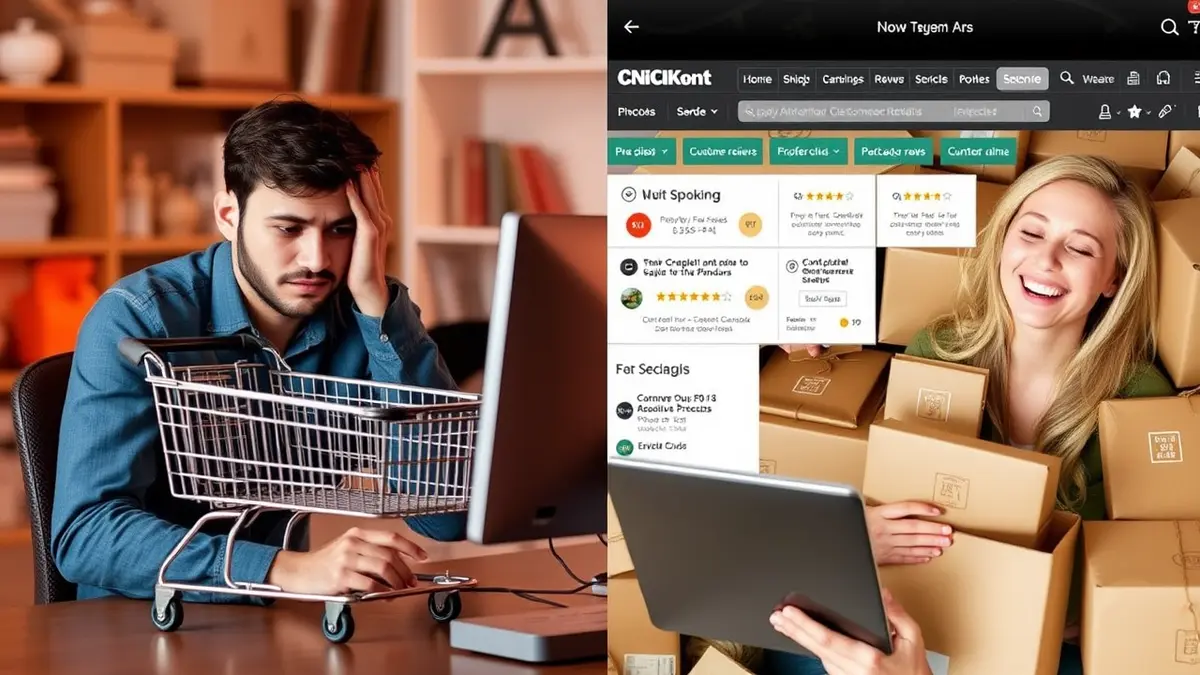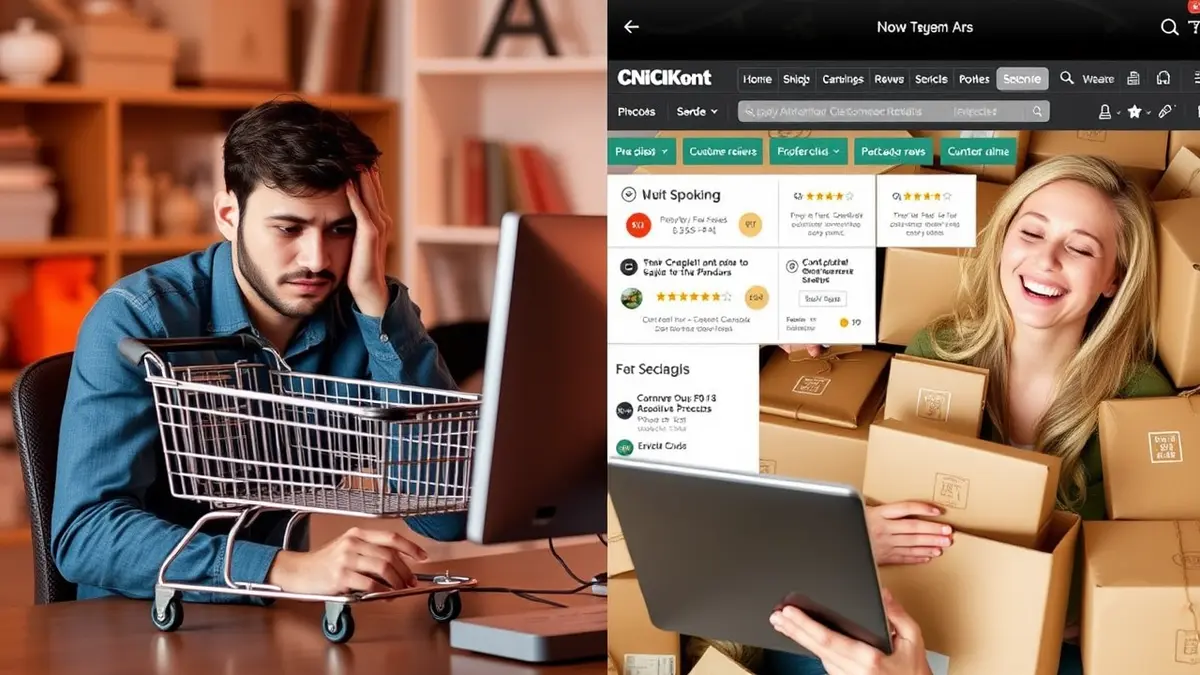Online Shopping Offers vs Flash Sales Which Drive Bigger Savings
Torn between the allure of online shopping offers and the time-sensitive excitement of flash sales? This guide breaks down both strategies, revealing which method truly delivers bigger savings for savvy shoppers. Stop guessing and start maximizing your discounts!
What You'll Learn
- Understanding Online Shopping Offers
- Decoding Flash Sales
- Key Differences: Offers vs. Flash Sales
- When to Choose Online Shopping Offers
- When to Pounce on Flash Sales
- Strategies to Maximize Savings with Both
- Real-World Examples: Success Stories
- The Future of Online Discounts
- Conclusion: Your Savings Strategy
Understanding Online Shopping Offers
Online shopping offers are, well, everywhere. From coupon codes to limited-time promotions, they represent a broad spectrum of discounts aimed at attracting and retaining customers. Think of it as the steady, reliable engine of savings. Not the flashiest, but consistent.
These offers often include:
- Percentage-based discounts: 10% off, 20% off, etc.
- Dollar-amount discounts: $5 off, $10 off, etc.
- Free shipping: A classic!
- Buy-one-get-one (BOGO) deals: Buy one, get one free or at a reduced price.
- Bundle deals: Discounts for purchasing multiple items together.
- Loyalty rewards: Points, discounts, or exclusive offers for repeat customers.
- Student or senior discounts: Targeted savings for specific demographics.
The beauty of online shopping offers lies in their relative accessibility. You can usually find them through:
- Retailer websites: Directly on the product page or a dedicated "Deals" section.
- Coupon websites: Sites like RetailMeNot or Coupons.com aggregate deals from various retailers.
- Email newsletters: Subscribing to your favorite stores' newsletters can unlock exclusive offers.
- Browser extensions: Extensions like Honey automatically find and apply coupon codes.
- Social media: Following retailers on social media can reveal flash sales and exclusive discounts to followers.
Decoding Flash Sales
Flash sales are the rockstars of the discount world. They're characterized by their limited time frame, often lasting only a few hours or a single day. The goal? Create a sense of urgency and drive immediate purchases. Think blink, and you might miss it.
Key elements of flash sales include:
- Limited-time duration: Usually hours or days.
- Significant discounts: Often deeper than typical online shopping offers.
- Limited quantities: Creates scarcity and encourages quick action.
- Announced in advance: Retailers often tease flash sales to build anticipation.
- Exclusivity: Sometimes offered only to email subscribers or loyalty program members.
Flash sales are designed to trigger impulse buys. The pressure to act quickly, combined with the allure of a significant discount, can be a powerful motivator. It’s the shopping equivalent of a sugar rush.
Key Differences: Offers vs. Flash Sales
So, what really separates online shopping offers from flash sales? It boils down to a few key distinctions:
| Feature | Online Shopping Offers | Flash Sales |
|---|---|---|
| Timeframe | Typically ongoing or with a longer expiration date. | Limited to a few hours or days. |
| Discount Size | Generally smaller discounts. | Often deeper discounts. |
| Availability | Usually readily available. | Limited quantities, higher risk of selling out. |
| Urgency | Low. No immediate pressure to buy. | High. Creates a sense of urgency. |
| Planning | Allows for research and price comparison. | Requires quick decision-making. |
In essence, online shopping offers provide a steady stream of potential savings, while flash sales offer the potential for bigger discounts, but with a higher risk of missing out.
When to Choose Online Shopping Offers
Online shopping offers shine in several scenarios:
- Non-urgent purchases: When you have time to compare prices and research products.
- Budgeting: They help manage spending by providing predictable discounts.
- Stocking up on essentials: Utilize coupons and ongoing promotions for everyday items.
- Combining with other discounts: Stack coupons, loyalty rewards, and other offers for maximum savings.
- Major purchases: Before pulling the trigger, use Wishmerge to be sure you've found every possible deal or discount code.
For example, I once needed a new printer (the old one died a horrible, ink-splattered death). Because it wasn’t a dire emergency, I spent a week comparing prices, hunting for coupons, and ultimately snagged a deal that saved me 30%. No flash in the pan required. Patience, young padawan. Patience.
When to Pounce on Flash Sales
Flash sales are your best bet when:
- You know exactly what you want: Speed is key, so having a specific product in mind is crucial.
- You're willing to take a risk: Flash sales often involve limited quantities, so there’s no guarantee you’ll get the item.
- You can act fast: Be ready to make a purchase quickly, without overthinking it.
- You're looking for a specific, high-demand item: Flash sales can offer discounts on popular products that rarely go on sale otherwise.
- Impulse buys: Sometimes, you just want something fun. Flash sales are perfect for those moments.
Let's say you've been eyeing a specific designer handbag. It rarely goes on sale. Then, BAM! A flash sale hits. This is your moment. If you hesitate, someone else will snag that bag. My aunt Mildred learned that the hard way.
Strategies to Maximize Savings with Both
Why choose? You can actually leverage both online shopping offers and flash sales to maximize your savings.
-
Combine offers: Look for retailers that allow you to stack coupons with existing discounts or free shipping offers.
-
Use browser extensions: Install extensions like Honey to automatically find and apply coupon codes while you browse.
-
Sign up for email newsletters: Retailers often send exclusive offers and early access to flash sales to their email subscribers. This One Trick Secures Exclusive Online Shopping Offers
-
Follow retailers on social media: Many retailers announce flash sales and exclusive discounts on their social media channels.
-
Use price comparison tools: Before making a purchase, use tools like Google Shopping or PriceGrabber to compare prices across different retailers.
-
Check deal aggregation websites: Websites like Wishmerge collect and curate deals from various retailers, making it easy to find the best discounts. Wishmerge delivers daily handpicked deals, trending products, and unique gift ideas from across the web. If you're searching for the best discounts or gift inspiration with direct links to the lowest prices, bookmark Wishmerge today.
-
Be mindful of shipping costs: Factor in shipping costs when comparing deals. Sometimes, a smaller discount with free shipping can be a better deal than a larger discount with high shipping fees.
-
Read the fine print: Always read the terms and conditions of any offer or flash sale to understand any restrictions or limitations.
-
Don't be afraid to abandon your cart: Retailers often send abandoned cart emails with additional discounts to entice you to complete your purchase.
-
Use cashback apps and websites: Earn cashback on your purchases by using apps like Rakuten or websites like Swagbucks. Honestly? This never worked for me until I understood the fine print.
Real-World Examples: Success Stories
Let's look at some real-world examples of how people have saved money using online shopping offers and flash sales.
- The Electronics Enthusiast: Saved $200 on a new TV by combining a manufacturer's coupon with a store-wide online shopping offer.
- The Fashionista: Scored a designer dress for 70% off during a flash sale by acting quickly and knowing her size.
- The Parent: Stocked up on diapers and baby wipes using a buy-one-get-one-free online shopping offer.
- The Student: Got a free textbook by using a student discount combined with a limited-time promotion.
- The Savvy Shopper: Consistently saves money by using cashback apps and browser extensions to find and apply coupon codes.
The Future of Online Discounts
The world of online discounts is constantly evolving. Here are some trends to watch out for:
- Personalized offers: Retailers are increasingly using data to personalize offers based on your shopping habits and preferences. A TechCrunch piece last spring hinted at even more sophisticated AI-driven personalization.
- AI-powered deal finders: AI-powered tools are emerging that can automatically find and apply the best discounts for you.
- Social commerce: Shopping directly through social media platforms is becoming increasingly popular.
- Subscription-based discounts: Paying a monthly fee for access to exclusive discounts and benefits is gaining traction.
- The Metaverse and Discounts: Don't be surprised if virtual stores start offering exclusive discounts to avatar-shoppers in the future.
Conclusion: Your Savings Strategy
So, Online Shopping Offers vs Flash Sales, which is better? The answer is: it depends. Both offer unique benefits. Online shopping offers provide a steady stream of potential savings, while flash sales offer the potential for bigger discounts, but require quick action.
By understanding the key differences between these strategies and employing the tactics outlined above, you can become a savvy shopper and maximize your savings. Embrace both, stay informed, and happy shopping! Remember to visit Wishmerge to find the best deals and gift ideas across the web!






